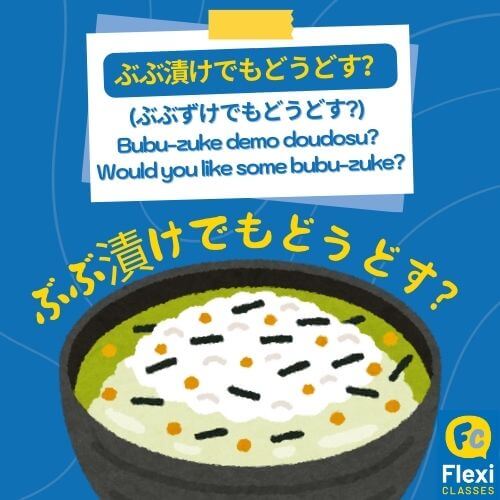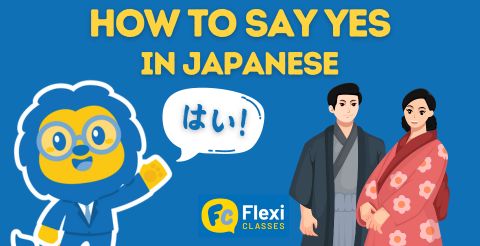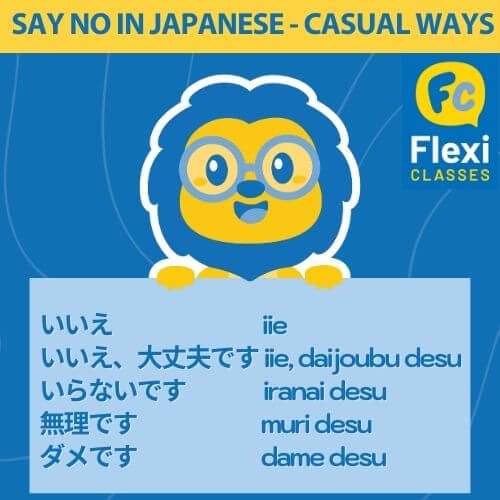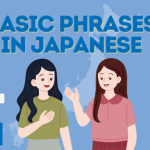Cracks in the Country of Harmony: How to Say No in Japanese
Not as Simple as it Seems: Understanding the Variations of No in Japanese
As the phrase “和の精神 ( わ の せいしん wa no seishin) the spirit of harmony” suggests, disagreement and argument are highly frowned upon in Japanese culture.

👉 Therefore, it is very difficult in Japan to clearly say no to someone.
Of course, this does not mean that we agree with everything the other person says, but we express our intentions in a roundabout way.
There are many euphemisms in the Japanese language, but one of the most difficult to understand is probably the expression of a not-so-simple “no.”
However, with the spread of the Internet and the digitalization of our lives, there are more and more situations in which we communicate via chat tools and more and more situations in which the Japanese clearly state their approval or disapproval.
In this article, you will learn how to express refusals and negatives in Japanese.
No in Japanese || Cultural Context
No in Japanese || Casual Expressions
No in Japanese || Formal Expressions
No in Japanese || FAQs:
No in Japanese || Cultural Context

A common topic of conversation among Japanese people is the rule in Kyoto that if you are offered お茶漬け ( おちゃづけ ochazuke; boiled rice with tea), you are supposed to leave.
In Kyoto dialect, if someone says this:
ぶぶ漬けでもどうどす?
ぶ ぶ つけ で も どう どす?Bubu-zuke demo doudosu?
Would you like some bubu-zuke?
(ぶぶ漬け bubu-zuke is a Kyoto dialect for お茶漬け ochazuke)
It does not mean that you are being offered a meal, but rather that you should leave quickly.
Similarly, “Your watch is beautiful, isn’t it?,” also implies “Please leave now.” If a Kyoto person says something to you, you might as well get your coat on. 👋
Kyoto is an ancient city where the essence of Japanese culture is concentrated, but more or less similar euphemisms are used daily in other Japanese cities as well, making them difficult to interpret even for native Japanese speakers.
For example, there is an expression “結構です けっこう です Kekkou desu.” This is a word that cannot be translated by itself because its meaning is the exact opposite depending on the context.
The word “結構 kekkou” itself means good or excellent, but when used in conversation, 結構です kekkou desu can mean “I accept that” and “I don’t need/want that,” depending on the context.
When you want a Japanese person to express his or her intentions clearly, you need to say so clearly. Of course, even if you say so, it does not necessarily mean that they will make a clear statement.
Let’s look at another example ⬇️
Japanese companies often visit Silicon Valley and other overseas business clusters, and they are notorious for not making decisions promptly.
This is partly because subordinates making decisions on their own disrupts organizational leadership, but it is also because Japanese companies value harmony, and unless everyone on the team agrees on a certain topic before making a decision, the unity of the team will be disrupted.
Japan’s first codified law which was enacted in 604 A.D., the Seventeen-Article Constitution, states in its first article, “Cherish the harmony among people..”
Thus, group harmony is of utmost importance to the Japanese, so the highest care must be taken in expressing denial or rejection.

In the Country of Harmony: How to Say Yes in Japanese
Understanding the Variations of Yes in Japanese || Need-to-Know Vocab, Phrases and Culture Japan is a country that values harmony, and there is a great psychological cost to saying no or rejecting something. Of course, whilst saying yes in Japanese…
No in Japanese || Casual Expressions
Now let’s look at the expressions for saying no.
いいえ iie
いいえ、大丈夫です iie, daijoubu desu
いらないです iranai desu
無理です muri desu
ダメです dame desu
As mentioned above, directly saying いいえ iie gives an aggressive impression. Instead, in everyday conversation, we say 大丈夫です daijoubu desu when we reject a proposal. It’s so confusing, but “大丈夫です daijoubu desu” can also mean “it’s ok.”
Is your head about to explode?
It is best to say it with gestures, such as shaking the head from side to side or making a cross with both hands.
Another way to unmistakably say no is to combine expressions like “いいえ、大丈夫です iie daijoubu desu.” In this case, others won’t think you are saying “大丈夫です daijoubu desu” in the sense of “it’s ok.”
“すみません、大丈夫です sumimasen daijoubu desu” will also work.

If you want to give up and simply declare your intentions, you can use expressions like:
いらないですiranai desu
I don’t need that.
無理ですmuri desu
I can’t do that
You say “ いらないです ” when someone offers you something and you don’t need that. For example in restaurants or shops, you are offered something, but you don’t feel like having that. Then you say “いらないです.”
👉 As for ダメです dame desu, ダメ dame means “no good.”
For example, if you are asked if your schedule is open and it is not, say this. When you are busy on a certain day, you say “ その日はダメです sonohi ha dame desu. / I’m not available that day.” This can be also used when you are asked for permission. “Can I take a picture of you?” “ダメです dame desu.”
To make these expressions more casual, just remove “です desu” and say “無理 muri” or “ダメ dame.” In anime, these expressions appear so often.

Are the Japanese Always Apologetic? How to Say Sorry in Japanese
Understanding the Variations of Sorry in Japanese || Casual and Formal Expressions As you might’ve guessed, today’s blog post is all about how to say “Sorry” in Japanese. Apology and humility play an important role in Japanese culture. In the…
No in Japanese || Formal Expressions
The expressions seen above are very informal and can be effective in conveying refusal in conversation with strangers.
💼 But in many business situations, there are many situations where you need to reject a proposal, but you must maintain a relationship with the other party. In such situations, you need to know the Japanese way of saying “no.”
検討いたします kentou itashimasu
考えておきます kangaete okimasu
今回はご縁がなかったということで konkai ha goen ga nakatta toiukoto de
今回は申し訳ありません konkai ha moushiwake arimasen
また次回機会がありましたらよろしくお願いいたします mata jikai kikai ga arimashitara yoroshiku onegai itasimasu.
検討いたします ( けんとういたします kentou itashimasu) and 考えておきます [かんがえておきます] kangaete okimasu litellary mean “I’m going to think about it.”
But in Japanese, not giving a clear conclusion in a conversation usually means that the decision will be made in a negative manner.
Postponing is a euphemistic way of saying no.
Has it suddenly become more difficult? Don’t worry, even for native Japanese, to decline a proposal is difficult, especially in business situations.

今回はご縁がなかったということで ( こんかい は ご えん が なかった という こと で... … kokaiwa goen ga nakatta toiu kotode… ; This time we didn’t have a good fate.) is also often used to decline a proposal.
👉 In Japanese conversation, it is rare to say the end of words or phrases clearly, especially when you say something negative. “ご縁 ご えん goen” means fate, and the Japanese like to think of things as caused by something like fate rather than by personal decisions in order to avoid personal responsibility.
This idea is reflected in the expressions to say no. Such expressions are very well received by the Japanese.
In verbal conversations, you don’t have to say certain phrases clearly to the end. But in text like mails or chats, you have to write a sentence to the end.
In such a case, you can’t end a sentence with 今回はご縁がなかったということで konkai wa goen ga nakatta toiu kotode.” You have to write a full sentence.
Then you can use phrases like:
今回は申し訳ありません
こんかい は もうしわけ ありませんkonkai wa moushiwake arimasen.
I’m sorry for this time.
Or
また次回機会がありましたらよろしくお願いいたします
また じかい きかい が ありましたら よろしく おねがいいたしますmata jikai kikai ga arimashitara yoroshiku onegai itashimasu
We look forward to the next opportunity to work with you again. (Maybe later)
A simple apology can also indicate refusal. In business situations, apologizing may be the most used way of saying no. Saying “maybe later” in a polite way is also popular. These expressions are complete sentences, so you can use them in mails and documents.

Basic Phrases in Japanese // Learn 32 Essential Phrases (With Flashcards & FREE Quiz)
Basic Phrases in Japanese // Learn these phrases to make your first steps when learning Japanese. We teach you how to get by when speaking basic Japanese.
That is all for this article. Whilst you can see expressing ‘No’ in Japanese is no simple feat, hopefully now you’re feeling a little more prepared!
BONUS || If you enjoyed this article, why not learn how to say and No in Korean and No in Spanish
No in Japanese || FAQs:
Why is directly saying “no” often avoided in Japanese culture?
Directly saying “no” can be seen as harsh or disrespectful, and Japanese culture values harmony and avoiding confrontation.
What is the casual way to say no in Japanese?
The casual way to say no is 無理 muri or ダメ dame.
How do Japanese people handle giving negative feedback without saying “no”?
They may use indirect language, suggest improvements, or frame the feedback in a positive light to maintain harmony.
How do non-verbal cues play a role in expressing “no” in Japan?
Non-verbal cues such as hesitating, avoiding eye contact, or a subtle head shake can indicate a negative response.
How important is context in understanding a “no” in Japanese?
Context is crucial; the situation, relationship between the speakers, and non-verbal cues all help convey the intended refusal.
Want More From LTL?
WANT TO LEARN JAPANESE? Check out our online Japanese courses here.
We offer a 7-day free trial to all new students where you can study 24/7.
What about studying Japanese in Japan instead? We’ve got your back. Our Japanese courses in Tokyo can either be taken in small groups of no more than 5 students or individually for a more tailored experience.
We even offer incredible homestay experiences in Tokyo as well.
Come and be a part of this amazing community.











